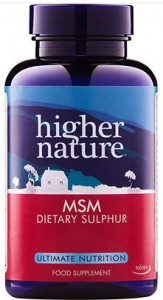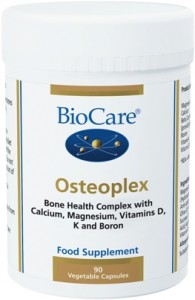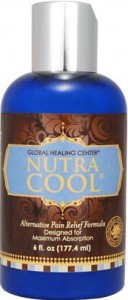For many of us, getting old and our joints becoming painful and affecting our mobility is just a part of ageing. We hope we won’t get arthritis but accept we may, so it’ll simply be what happens when we reach an advanced age.
Today, arthritis is the most common cause of disability in the United States, with more than 20 million afflicted people experiencing severe limitations in their daily lives1. Staggeringly, it accounts each year for almost one million hospitalisations and nearly 45 million outpatient visits2 – and it’s been estimated the financial cost of arthritis is close to $100 billion, almost half of which is in loss of earnings.
But is all this inevitable? Well, there are actually several different forms of arthritis, thus the causes are complex. But, equally, that means nobody afflicted by arthritis should give in to the disease – as there also various forms of treatments available with the potential to greatly improve sufferers’ quality of life.
Osteoarthritis and rheumatoid arthritis
The two most often-suffered forms of the condition are osteoarthritis (or non-inflammatory arthritis) and rheumatoid arthritis (or inflammatory arthritis). The most common form of all is the former. Potentially affecting hands, wrists, feet, the back, hips and knees of sufferers, it afflicts more than three in every 10 women by the time they reach 65 years of age. And it can be caused, in part, by obesity and sedentary lifestyles, as well as previous joint trauma.
For its part, rheumatoid arthritis sees the body’s immune system attack its own tissues – not least joints in the fingers, wrists elbows and knees (potentially leading to deformity if left untreated). But why does the immune system do this? It could well be because a sufferer lacks certain minerals in their body (e.g. potassium, calcium and magnesium). Indeed, if you’re not getting enough – of the right form of – calcium in your diet (irrespective of whether you drink milk or not), your body won’t produce enough synovial fluid, which is what lubricates the joints. And, without effective lubrication, the bones in joints will rub against each other and result in cartilage decay and an inflammation response.
Moreover, if somebody’s suffering from arthritis it also means they’ll have too many toxins in their body and, owing to the onset of the condition, it’s likely one of the places that the body chooses to dump these toxins will be the joints – these toxins that will cover and coat chronosytes, the cells that produce synovial fluid, hence the fluid won’t effectively be produced doubly over. Plus, of course, it’s these toxins that the immune system is aiming for when it attacks the body’s tissues and, here in particular, the joints.
Treatment
1. Medication
For rheumatoid arthritis, a likely form of treatment is biological medication, which will doubtless involve injections; however, the most common medical treatment comprises ‘disease-modifying anti-rheumatic drugs’ (DMARDs). Taken as tablets, they look to ease symptoms and slow down the progress of the disease. They work by blocking the effectiveness of the immune system’s chemicals when they attack the body’s joints. Typical DMARDs include methotrexate, hydroxychloroquine, leflunomide and sulfasalazine.
2. Surgery
To reduce pain or correct deformities, surgery is an option that’s sometimes turned to, for example:
- carpal tunnel release – to treat abnormal bending or remove inflamed tissue lining the finger joints by cutting a ligament so pressure on a nerve is relieved or finger tendons released
- arthroscopy – to remove inflamed joint tissue via the insertion of a thin tube with a light source into the joint and then removing the damaged tissue using special surgical instruments inserted through other small cuts in the skin
- arthroplasty – to replace parts of or all of a joint (i.e. hip, knee or shoulder) for someone with advanced rheumatoid arthritis; the latest replacement joints tend to have a lifespan of 10-20 years.
3. Physiotherapy
This form of treatment is well regarded for improving fitness and muscle strength and the flexibility of joints among arthritis sufferers. Physiotherapy may also provide effective pain relief via heat packs or ice packs or via transcutaneous electrical nerve stimulation (TENS), which sees a small electrical pulse applied to an affected joint to numb the nerve endings.
4. Complementary therapy
Many people with rheumatoid arthritis try complementary therapies – such as massage, acupuncture, osteopathy and chiropractic therapy – for short-term relief from symptoms.
5. Supplements
Finally, for those suffering from the effects of arthritis, boosting the body’s mineral content through specific arthritis supplements could also be highly beneficial. All the following supplements are available through The Finchley Clinic and come highly recommended for arthritis sufferers:
 MSM (methyl sulphonyl methane) aids in cartilage formation and collagen generation, helping to maintain joint and muscle health, while it may also assist liver detoxification in the body and aid immunity; available in tablet form (1,000mg – 90 tablets, 180 tablets, 250 tablets and 500 tablets), as a warming balm and in powder form (200g, 454g and 900g)
MSM (methyl sulphonyl methane) aids in cartilage formation and collagen generation, helping to maintain joint and muscle health, while it may also assist liver detoxification in the body and aid immunity; available in tablet form (1,000mg – 90 tablets, 180 tablets, 250 tablets and 500 tablets), as a warming balm and in powder form (200g, 454g and 900g)
 Osteoplex (90 capsules) contains nutrients that help strengthen the skeletal system, bone health and the function of nerves and muscles, including magnesium, boron, Vitamins D and K, beta carotene and calcium citrate
Osteoplex (90 capsules) contains nutrients that help strengthen the skeletal system, bone health and the function of nerves and muscles, including magnesium, boron, Vitamins D and K, beta carotene and calcium citrate
 Nutracool is an all-natural rub-in formula that provides soothing relief from strained muscles and joint and knee tenderness.
Nutracool is an all-natural rub-in formula that provides soothing relief from strained muscles and joint and knee tenderness.
References:
1 CDC.gov. 2016. Arthritis. At A Glance Reports. Publications. Chronic Disease Prevention and Health Promotion. CDC. http://www.cdc.gov/chronicdisease/resources/publications/aag/arthritis.htm.
2 Yelin, E., Cisternas, M., Pasta, D., Trupin, L. “Direct and Indirect Costs of Musculoskeletal Conditions in 1997: Total and Incremental Estimates Revised Final Report” (July, 2003).
